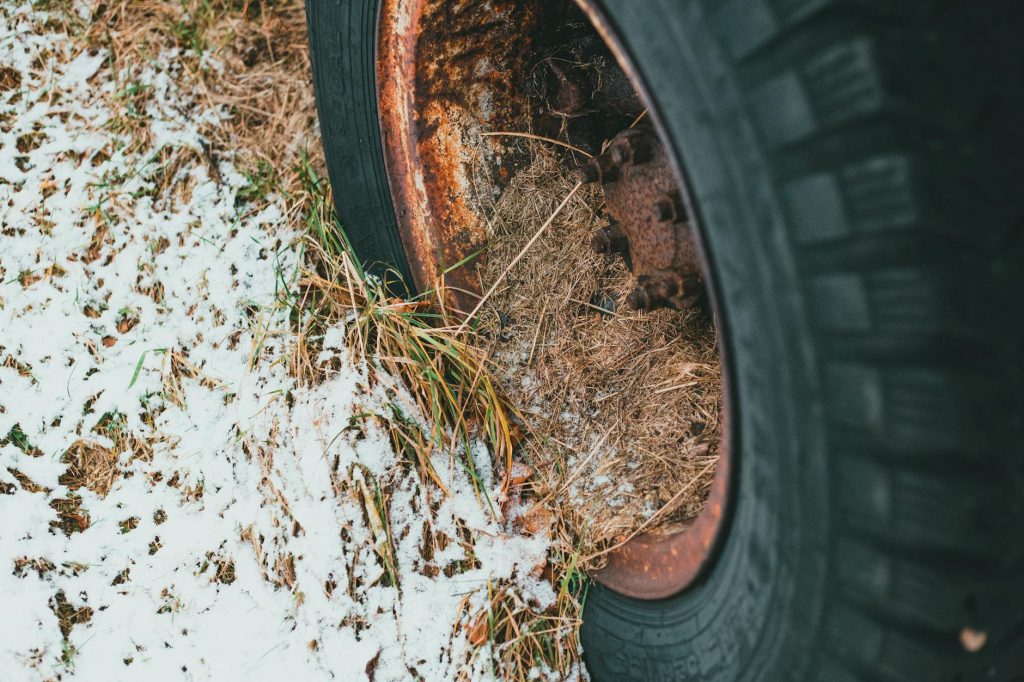Winter Tires Overview
If you drive around the Greater Toronto Area, Niagara Falls, Kitchener, Hamilton, Surrey, Ottawa, or Calgary, knowing the perks and differences between winter tires and all-season tires is a must for safe winter driving.
Why Winter Tires Rock
Winter tires are built to tackle the nastiest winter conditions, giving you top-notch performance on snow and ice. They make driving safer and more stable when the weather turns ugly. Here’s why they’re awesome:
- Better Grip: Winter tires have deeper treads and special patterns that bite into snow and ice, cutting down on slipping.
- Improved Braking: They stop quicker on snowy and icy roads, keeping you safer.
- Superior Handling: The rubber stays flexible in the cold, giving you better control and stability.
Heads Up: Winter tires come with extra costs like seasonal swaps and reprogramming the tire pressure monitoring system (TPMS).
Winter Tires vs. All-Season Tires
Winter tires shine in cold, snowy, and icy conditions, while all-season tires are a jack-of-all-trades for various weather, including mild winters. Check out this comparison:
| Feature | Winter Tires | All-Season Tires |
|---|---|---|
| Traction on Snow/Ice | Excellent | Moderate |
| Braking on Snow/Ice | Shorter Distances | Longer Distances |
| Performance in Cold | Optimal | Reduced |
| Performance in Warm/Rainy Weather | Poor | Good |
| Seasonal Convenience | Needs Swaps | Year-Round Use |
| Extra Costs | Higher (swaps and TPMS) | Lower |
If you live where winters are brutal, winter tires are worth it. But if your winters are mild, all-season tires might be more practical and cheaper.
For more on winter tires, check out our articles on winter rims advantages and winter rims installation. If you’re shopping for winter tires or rims, browse our winter rims for sale and winter rims discounts sections.
Winter Rims and Steel Rims
Why Winter Rims Matter
Winter rims are crucial for safe and efficient winter driving. They protect your nice rims from winter damage like salt and grit, which can cause rust and wear. Having a separate set of rims for winter tires also makes tire changes easier and cheaper, whether you do it yourself or pay a mechanic.
Storing tires on their rims during the off-season is key to keeping them in good shape. Stacking tires without rims can mess them up, shortening their lifespan. Tires on rims make changing them a breeze, involving simple steps like parking on a flat surface, using a jack, and swapping the tires.
Steel Rims vs. Alloy Rims
When picking winter rims, you’ve got two main choices: steel rims and alloy rims. Each has its pros and cons, so choose what fits your needs best.
| Feature | Steel Rims | Alloy Rims |
|---|---|---|
| Durability | Tough in winter | Less tough in harsh winter |
| Cost | Cheaper | Pricier |
| Weight | Heavier | Lighter |
| Heat Conduction | Less efficient | More efficient |
| Looks | Basic | Stylish |
Steel Rims
Steel rims are a go-to for winter driving because they’re durable and affordable. They don’t contract as much in the cold, helping maintain tire pressure, which is good for performance and tire wear. Plus, they’re cheaper, making them a budget-friendly winter option.
Using steel rims in winter protects your pricier alloy rims from salt and grit damage, keeping them in good shape.
Alloy Rims
Alloy rims, usually made from aluminum or magnesium, are lightweight and stylish. They conduct heat better, which can help with braking. But they’re less durable in harsh winter conditions and cost more than steel rims.
While alloy rims look great, they’re not always the best for winter. They’re more likely to get damaged by salt and grit, making them less practical for tough winter months.
For more on finding the best winter rims for your ride, check out our sections on winter rims for sale, winter rims calgary, and winter rims ottawa. Whether you go for steel or alloy rims, having the right winter rims will boost your vehicle’s safety and performance in winter.



